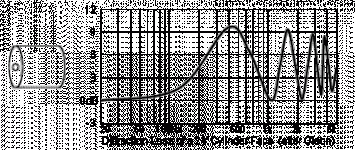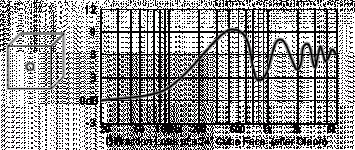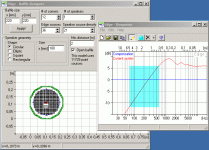I was very intrigued to watch this video:
YouTube - OPEN SPEAKERS - WITHOUT BAFFLE
Is there an added challenge to building a baffle-less speaker as opposed to an open baffle, apart from how to support the driver? Take, for example, the Beta 12LTA or something of that nature. Would it be possible to run it free-air, apply baffle step according to the width of the driver itself and get a balanced sound down to its natural rolloff point? Or would the result be considerably different?
One last somewhat related question: Does anyone feel that taking a high-sensitivity driver and applying 6db of BSC robs such a driver of some of its 'magic'?
YouTube - OPEN SPEAKERS - WITHOUT BAFFLE
Is there an added challenge to building a baffle-less speaker as opposed to an open baffle, apart from how to support the driver? Take, for example, the Beta 12LTA or something of that nature. Would it be possible to run it free-air, apply baffle step according to the width of the driver itself and get a balanced sound down to its natural rolloff point? Or would the result be considerably different?
One last somewhat related question: Does anyone feel that taking a high-sensitivity driver and applying 6db of BSC robs such a driver of some of its 'magic'?
I would think that one would need tremendously high Qts (which the 12LTS doesn't have) or gobs of xmax and a *$&^#4 load of EQ. Or better yet a nice sheet of plexiglass. 🙂
Go to my downloads page and look for "How open baffles work". Chapter 3 talks about baffle-less-speakers, but you need to read chapters 1 + 2 before that to understand.😉Is there an added challenge to building a baffle-less speaker as opposed to an open baffle, apart from how to support the driver?
Try find a large PA woofer, say 15" or 18" and a smaller full range driver, say Tangband W4, and then use lots of equalization.
Go to my downloads page and look for "How open baffles work". Chapter 3 talks about baffle-less-speakers, but you need to read chapters 1 + 2 before that to understand.😉
Rudolf, thanks for the link. I'll read it right now.
I suppose MJK's mathcad could simulate a baffle-less speaker, couldn't it?
Rudolf has excellent insights to learn. Also N.P. MJK, Stigerik, JohnK, S Linkwitz and many threads in the Multi-way catagory. Particularly, is flat not correct or what ever, etc.etc. Lots of reading, re-reading and understanding.
The latest, "Fin" published project thread is the ultimate in DIY sucsess in dipole/OB stuff to look foward to
The latest, "Fin" published project thread is the ultimate in DIY sucsess in dipole/OB stuff to look foward to

Well, up to a point. The problem: If you have (almost) no baffle, the radiation from the backside of the driver becomes a major contributor to the forward radiation. Above 2 kHz (just to throw in a rough number) the radiation from the backside is heavily influenced by resonances in the cavities between cone, basket, spider and magnet. Plain Thiele-Small parameters don't apply any longer.I suppose MJK's mathcad could simulate a baffle-less speaker, couldn't it?
In my latest experiments MJK's worksheet have been helpful in estimating SPL levels and EQ demands, but not for simulating the frequency response in any detail.
Rudolf
The latest, "Fin" published project thread is the ultimate in DIY sucsess in dipole/OB stuff to look foward to
Hello,
To which project are you referring to specifically flg?
Regards,
René
The less baffle, the more crossover and EQ. Pick your poison.
YouTube - Vivaldi plays on baffleless Fostex 126en and GR Research SW-12-16FR direct servo subwoofers
YouTube - Vivaldi plays on baffleless Fostex 126en and GR Research SW-12-16FR direct servo subwoofers
There may be another potitional problem with this. True Audio in there article on difraction loss discussed the ripples in frequency responce caused by different baffel shapes. I wonder if a speaker without a baffel would show the same ripple effect as speaker on a circular baffel with the speaker mounted in the center? The article has a lot more shapes.
True Audio TechTopics: Diffraction Loss
True Audio TechTopics: Diffraction Loss
Attachments
Much less ripple after the first peak. I try to explain it in my paper. See post #3.I wonder if a speaker without a baffel would show the same ripple effect as speaker on a circular baffel with the speaker mounted in the center?
Hello,
To which project are you referring to specifically flg?
Regards,
René
http://www.diyaudio.com/forums/mult...-linear-open-baffle-speaker-measurements.html
I checked out the fin, and it really is an impressive design. What he managed to achieve with off-axis response is unique from what little experience I have.
Well, if you liked that one, get comfortable. Read this one
http://www.diyaudio.com/forums/multi-way/142015-my-open-baffle-dipole-beyma-tpl-150-a.html
😀
http://www.diyaudio.com/forums/multi-way/142015-my-open-baffle-dipole-beyma-tpl-150-a.html
😀
One thing that I've wondered about this kind of speaker is how the low end is affected at ~ 70-200 hz with a FA22RCZ or a similar full range driver.
If I've understood correctly a naked speaker cone has much less output at the low end than one with a large baffle, but is it possible to compensate this through EQ? Say you use massive EQing on the naked driver, would you be able to get roughly equal sound output on the low end with the naked driver as if the driver had a large baffle?
And if the driver has to move more air if without baffle thus reaching is limit at lower levels, approximately how much lower would the maximum output be compared to if it had a large baffle? Is it a few db difference at 70 hz or much much more?
// Olle
If I've understood correctly a naked speaker cone has much less output at the low end than one with a large baffle, but is it possible to compensate this through EQ? Say you use massive EQing on the naked driver, would you be able to get roughly equal sound output on the low end with the naked driver as if the driver had a large baffle?
And if the driver has to move more air if without baffle thus reaching is limit at lower levels, approximately how much lower would the maximum output be compared to if it had a large baffle? Is it a few db difference at 70 hz or much much more?
// Olle
One thing that I've wondered about this kind of speaker is how the low end is affected at ~ 70-200 hz with a FA22RCZ or a similar full range driver.
You can easily model this with EDGE. Added to the natural roll-off of the FA22RCZ in infinite baffle there well be a massive roll-off (~ 18 dB at 70 Hz) due to the small baffle (aka frame diameter):
Attachments
You can easily model this with EDGE. Added to the natural roll-off of the FA22RCZ in infinite baffle there well be a massive roll-off (~ 18 dB at 70 Hz) due to the small baffle (aka frame diameter):
Does EDGE take driver TS parameters into account in its simulations?
Have you guys looked at the distortion levels when simulating or measuring no-baffle speakers? The forward/backward cancellation has to be made up somewhere. Either EQ or more driver cone area. There is no way out of this. It is much easier to design with a baffle and there is absolutely nothing wrong in the way it sounds with a baffle.
Going from boxed to OB is a big difference... from OB to NB is hard and I don't see any sonic improvements.
Going from boxed to OB is a big difference... from OB to NB is hard and I don't see any sonic improvements.
I am no expert at all, but do understand some physics.
I agree that there is not likely much advantage to no baffle design.
By it's nature, a driver is imperfect because of it's structure and dipole nature. Musical tones are produced by instruments that have varying degrees of directionality. Some may approach point sources, others not at all.
I think that no baffle may be good for certain instruments, like piano and horns, and not so good for others, like string instruments. Since we tend to listen to groups of instruments, nothing will really cover it.
IB makes it simple, but not more accurate, NB makes it complex but no more accurate. Closed designs... You get the idea.
I like OB because it is manageable and makes sense, but do what sounds best to you, because it is all an approximation at best.
I agree that there is not likely much advantage to no baffle design.
By it's nature, a driver is imperfect because of it's structure and dipole nature. Musical tones are produced by instruments that have varying degrees of directionality. Some may approach point sources, others not at all.
I think that no baffle may be good for certain instruments, like piano and horns, and not so good for others, like string instruments. Since we tend to listen to groups of instruments, nothing will really cover it.
IB makes it simple, but not more accurate, NB makes it complex but no more accurate. Closed designs... You get the idea.
I like OB because it is manageable and makes sense, but do what sounds best to you, because it is all an approximation at best.
I think it is possible to achieve accurate realistic sound with all approaches, closed, OB, NB. But designing an OB is the easiest of all, IMO.
The best, most realistic sound I have ever heard has been on an Altec VOT. Dynamics to die for, effortless and imaging so realistic that you can actually pick out individual instruments in the soundstage. I'm personally headed in the way of horns also. There really is no substitute for efficiency and low distortion. With no baffle, you are going the other way. You will need more and more cone area or EQ to keep with the cancellation and to keep distortion low.
The best, most realistic sound I have ever heard has been on an Altec VOT. Dynamics to die for, effortless and imaging so realistic that you can actually pick out individual instruments in the soundstage. I'm personally headed in the way of horns also. There really is no substitute for efficiency and low distortion. With no baffle, you are going the other way. You will need more and more cone area or EQ to keep with the cancellation and to keep distortion low.
- Status
- Not open for further replies.
- Home
- Loudspeakers
- Full Range
- What are the unique challenges to making a "baffle-less" speaker?


